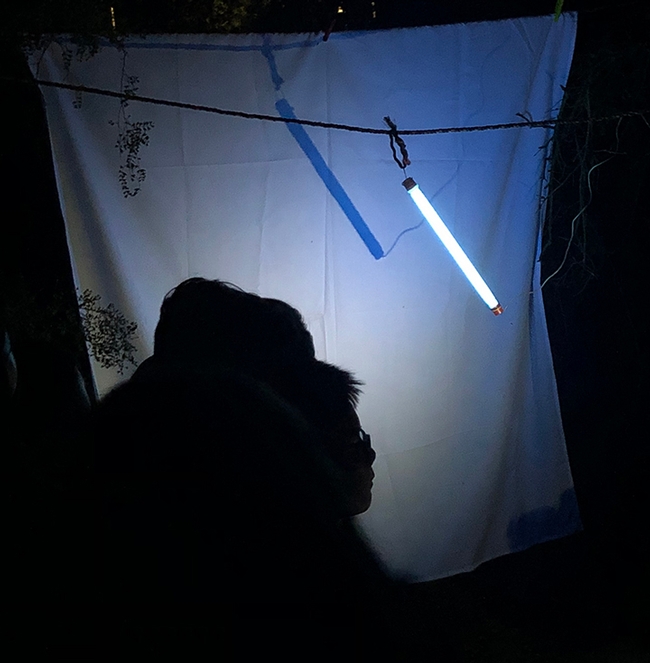
It was a family night in more ways than one.
Families who attended the Bohart Museum of Entomology's annual Moth Night last Saturday, Aug. 3, not only saw specimens from scores of insect families inside the UC Davis insect museum, but outside as well.
The blacklighting display drew at least 11 different species from five moth families: Tineidae, Tortricidae, Pyralidae, Geometridae, and Noctuidae, according to Bohart associate and "Moth Man" John De Benedictis.
De Benedictis, along with senior museum scientist Steve Heydon and Bohart associate Greg Kareofelas, set up the blacklighting display, comprised of a hanging white sheet illuminated by a generator-powered ultraviolet (UV light).
Moths that visited the blacklighting display from around 9:15 to 11 p.m. included:
Family Tineidae:
Opogona omoscopa (Opogona crown borer)
Family Tortricidae:
Clepsis peritana
Platynota stultana (omnivorous leafroller)
Cydia latiferreana (filbertworm)
Family Pyralidae:
Achyra rantalis (garden webworm)
Ephestiodes gilvescentella (dusky raisin moth)
Cadra figuliella
Family Geometridae:
Digrammia muscariata
Family Noctuidae:
Spodoptera exigua (beet armyworm)
Spodoptera praefica (western yellow-striped armyworm)
Parabagrotis formais

"At this time of year, I get 15 to 20 species most nights," said De Benedictis, an entomologist who started blacklighting in his backyard in 1998 and at Cold Canyon in 1989. "On the best nights, I'll get about 30 species in my yard and more than 100 at Cold Canyon. In recent years (since 2012), I've run my backyard light as many as 260 nights a year and have been getting 140 to 170 species each year."
Since 1998, he has recorded more than 350 species at night from his yard (including an occasional butterfly or skipper), "but there are at least 25 more that I have not identified, so I estimate I've collected 400 plus species in my yard in 21 years when diurnal (day-flying) species are included in the count."
If you attended Moth Night and you cultivate citrus, strawberries, pomegranates or cucumbers, you may have recognized some of the moths on the blacklighting display or seen the larval pests. For example, the omnivorous leafroller is a pest of citrus. The filbertworm is a pest of pomegranate. The Opogona crown borer is commonly found in bird of paradise plants, but also attacks strawberries, according to the UC Statewide Integrated Pest Management Program (UC IPM). The Spodoptera exigua (beet armyworm) and Spodoptera praefica (western yellow-striped armyworm) are pests of cucurbits (cucumber family).
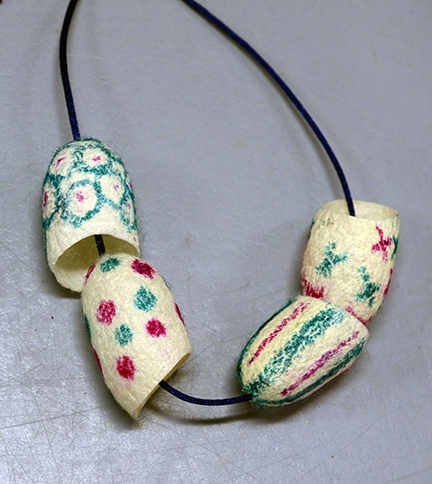
Smith estimates the Bohart's global moth collection at 300,000 to 350,000 specimens of moths. "A recent donation from a local collector likely added another 25,000 specimens of moths alone."
"A great many of the colorful moths are diurnal, including hummingbird moths that mimic bumble bees, clearwing moths that mimic wasps, and Arctiid moths that mimic toxic and distasteful butterflies such as Heliconians and Glassywings from South America," Smith said.
In size, visitors saw the biggest (Atlas) to the smallest moth. "Our smallest moth is one from Africa that was overlooked in the alcohol in which it was captured because of its tiny size," Smith pointed out. "Finally, a student separating the insects in the alcohol found it, and it is nearly microscopic." Visitors also marveled at the hummingbird moth which has a proboscis (tongue) that 12 inches long.
Bohart associate Emma Cluff curated the silkworm moths and silks display. She gathered silkworm moths from the Bohart Museum collection, and textiles from a donation by Richard Peigler, a moth expert and biology professor at the University of the Incarnate Word, San Antonio, Texas.
The family craft activity involved coloring and stringing white cocoons (donated by Peigler) to make necklaces or bracelets. Cluff and fellow entomologist enthusiast Keely Davies created a huge luna moth in the hallway. Some 200 visitors participated in the free and family friendly event.
The moth exhibit is currently on display at the Bohart Museum.
Founded in 1946 by Richard M. Bohart (1913-2007), and directed by Lynn Kimsey, UC Davis professor of entomology, the Bohart Museum houses a global collection of nearly eight million insect speicments. It is s also the home of the seventh largest insect collection in North America; the California Insect Survey, a storehouse of the insect biodiversity; a live "petting zoo" and a gift shop.
The Bohart Museum's regular hours have changed for the summer season. As of July 3, the insect museum is hosting 30-minute tours starting at 2:30 and 3:30 pm. No reservations are required and all ages are welcome. Admission is free, but donations are always welcomed. The Bohart is open to walk-in visitors Monday through Thursday from 1 to 5 p.m. It is closed from 9 a.m. to noon to walk-in visits (the insect museum conducts many tours and outreach programs during those times). More information on the Bohart Museum is available on the website or by contacting (530) 752-0493 or email bmuseum@ucdavis.edu.
Attached Images:
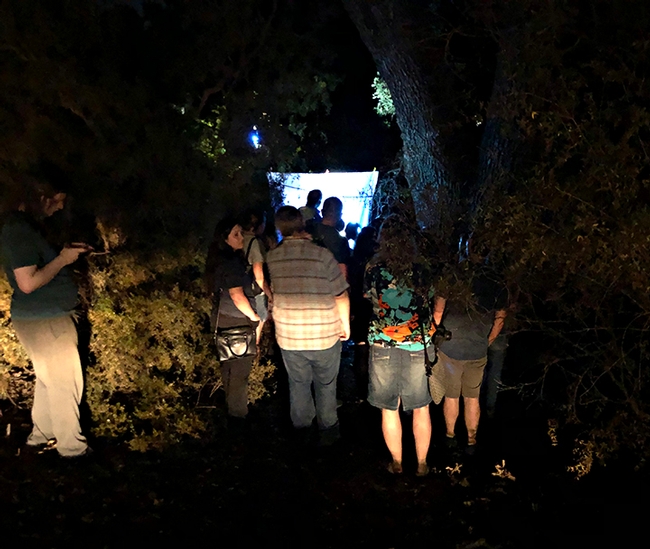
Visitors gather at the blacklighting display just outside the Bohart Museum of Entomology. (Photo by Kathy Keatley Garvey)
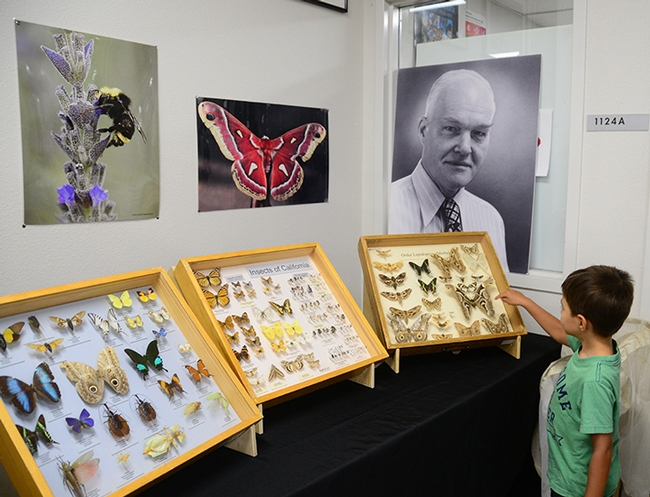
A photograph of entomologist Richard Bohart, for whom the Bohart Museum of Entomology is named, anchors this display. (Photo by Kathy Keatley Garvey)
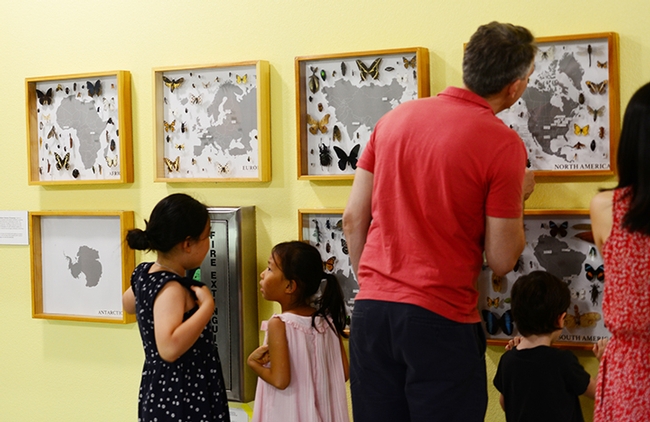
Visitors read the display in the Bohart Museum hallway. (Photo by Kathy Keatley Garvey)
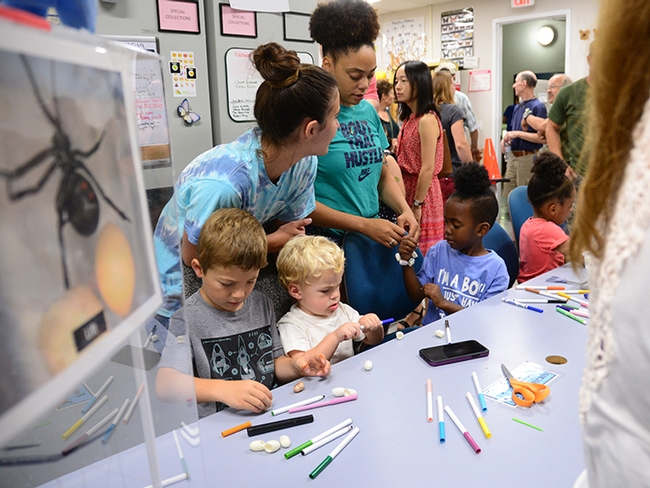
The youngsters work at coloring and stringing together cocoons for bracelets and necklaces. (Photo by Kathy Keatley Garvey)
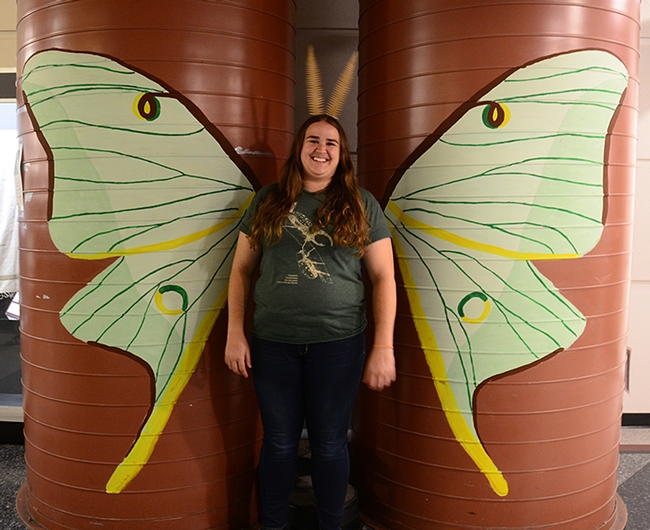
Bohart associate Emma Cluff displays the giant luna moth that she and Kelly Davies created. (Photo by Kathy Keatley Garvey)
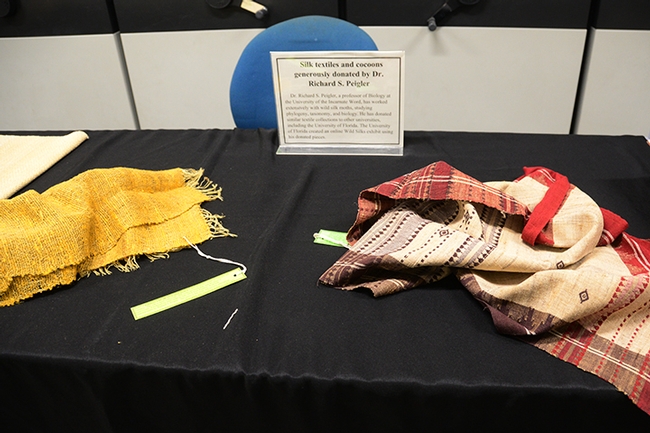
Richard Peigler, a biology professor at the University of the Incarnate Word, San Antonio, Texas, donated the textiles to the Bohart Museum. It is part of its permanent collection. (Photo by Kathy Keatley Garvey)
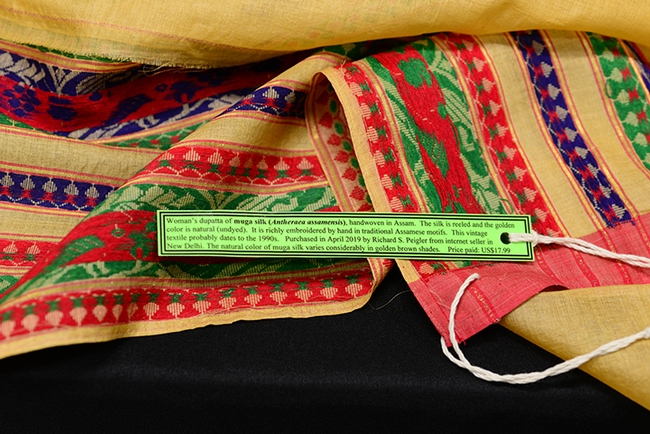
This is a woman's dupatta (shawl) of muga silk handwoven in Assam. It is richly embroidered by hand in traditional Assamese motifs. Moth expert Richard Peigler of San Antonio, Texas, donated this piece and many others to the Bohart Museum. (Photo by Kathy Keatley Garvey)
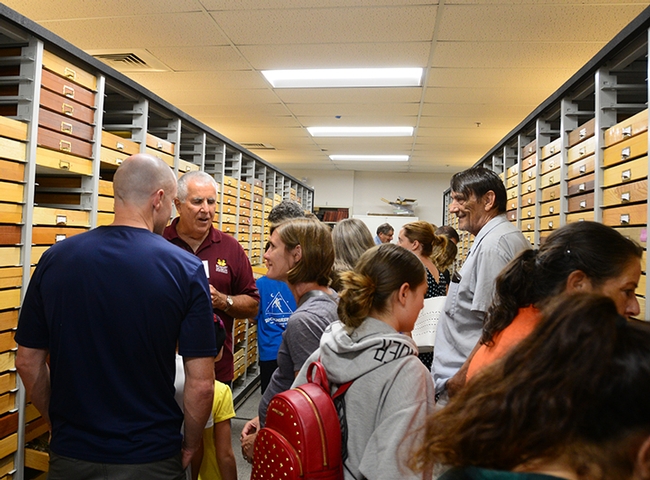
Entomologist Jeff Smith (second from left), curator of the Lepidoptera collection, answers questions from the crowd. (Photo by Kathy Keatley Garvey)